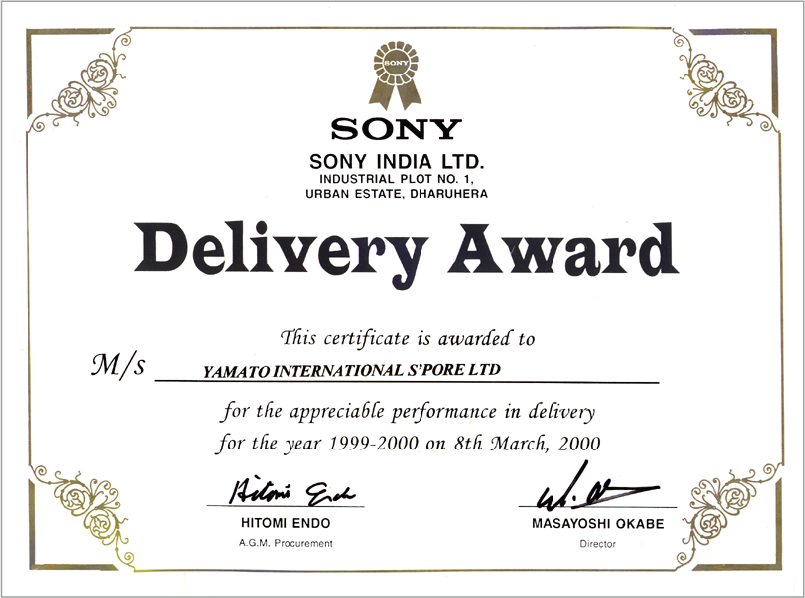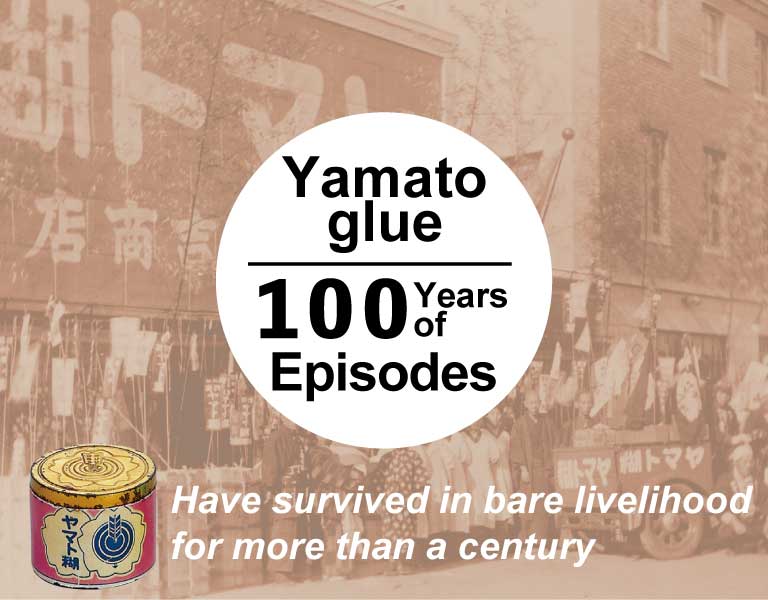


In 1899, Yakichi Kinouchi, wood and charcoal merchant in Ryogoku, Tokyo, was troubled by the fact that glue went bad, used to affix bags for selling charcoal in small lots quickly.
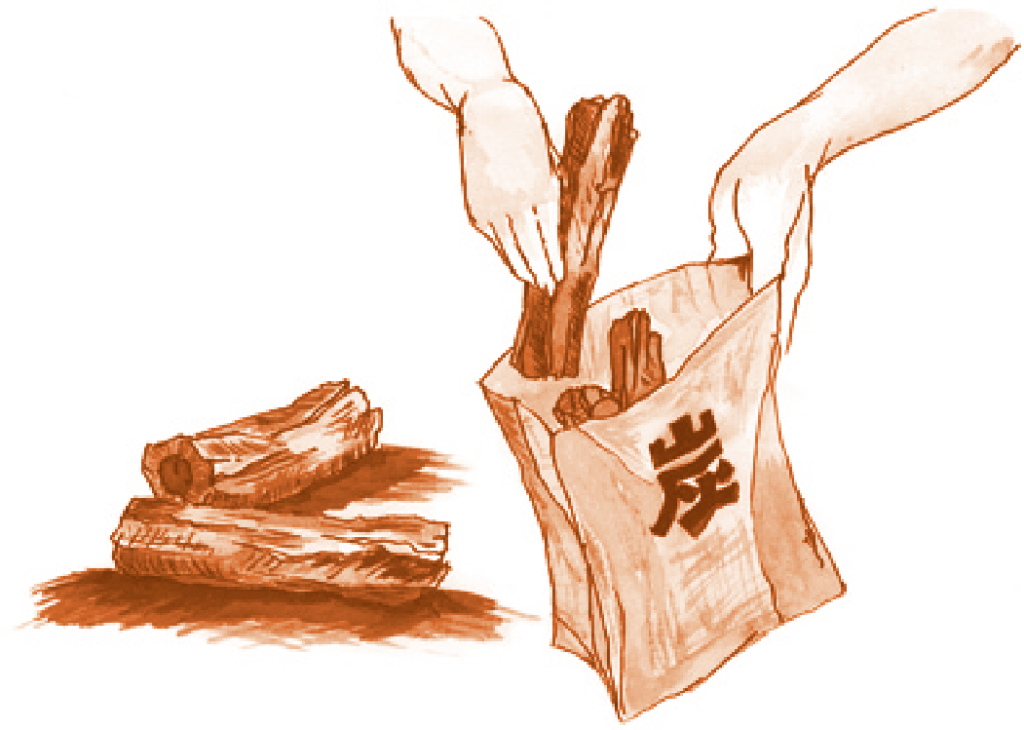
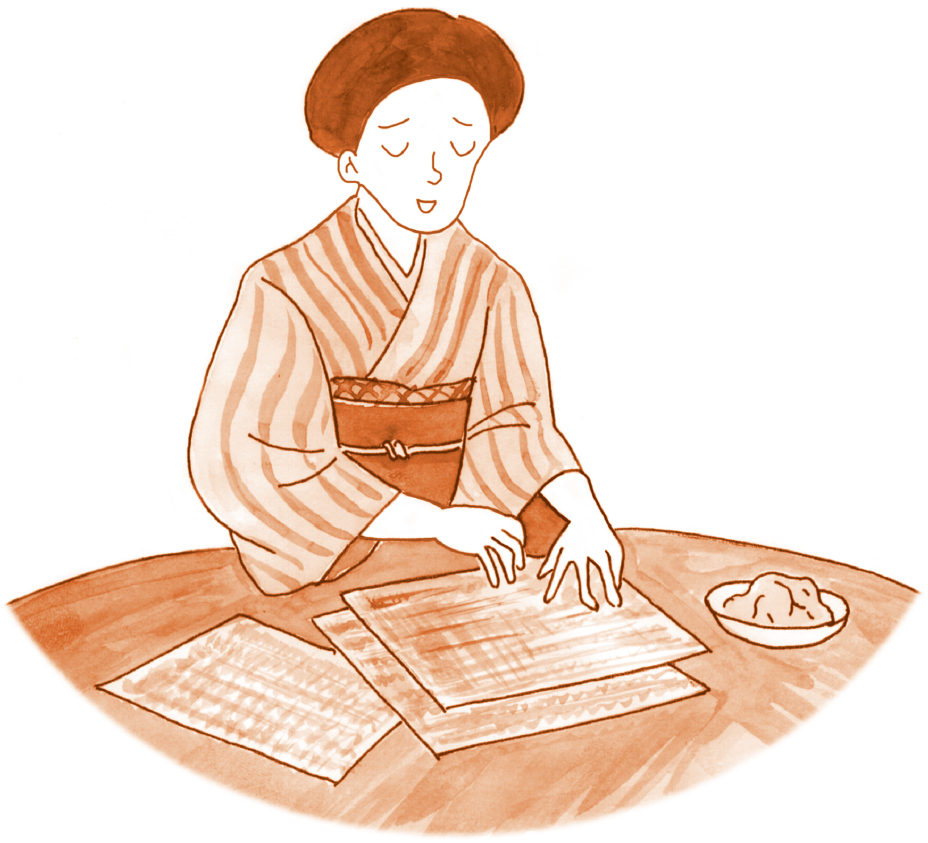
At that time, glue could not be preserved, so people either made their own or bought only the amount they needed from “glue vendors” each time they needed it.
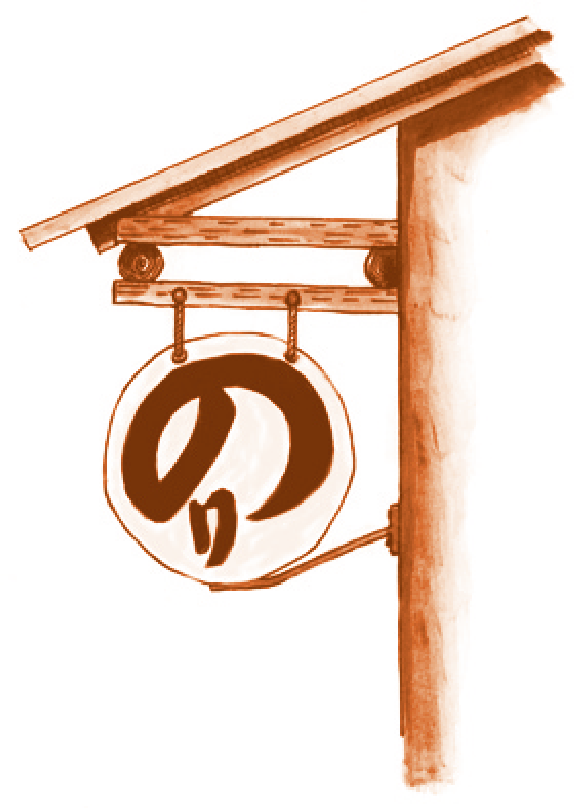
Yakichi Kiuchi gathered the knowledge of the intellectuals of the time and used a preservative for the first time in order to prevent the glue from rotting.
In addition, a flavoring agent was added to eliminate its pungent odor.
Pure rice starch was used as the raw material, and the paste was heated in a hot water bath to produce a homogeneous paste. The result was a paste that does not go rancid, had a pleasant aroma, did not harden, and could be stored for a long time.
Yamato Glue packaged in a bottle container was put on a large truck and sold to companies, schools, banks, post offices, etc. This was the starting point of the Yamato Glue business.
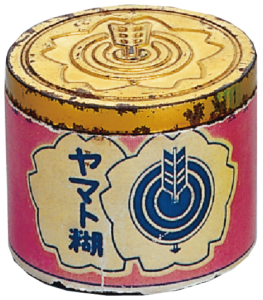
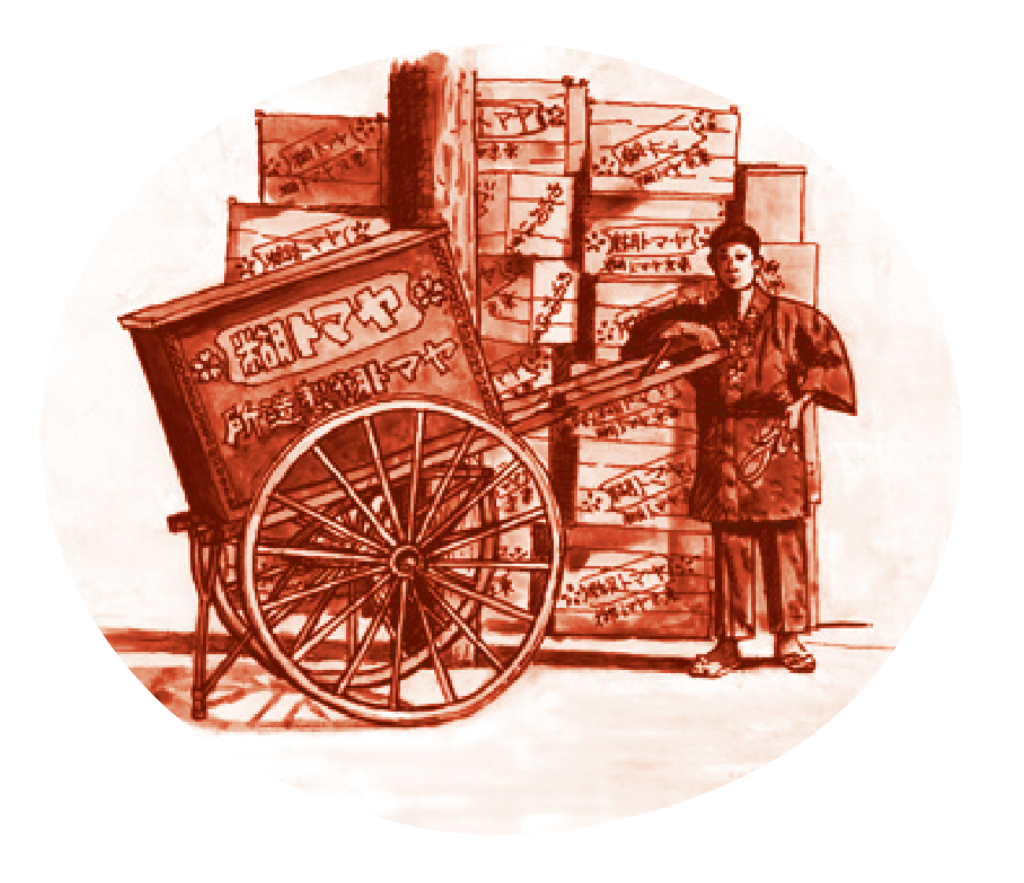


The wish to make it the best glue in Japan. The name “Yamato” is derived from the symbol of an arrow hitting a round target (an arrow hitting a target), which is a prayer that “business will hit the jackpot. The name “Yamato” was also derived from the name of an old Japanese country. At the time, the use of katakana letters in company names and trademarks was an epoch-making event.
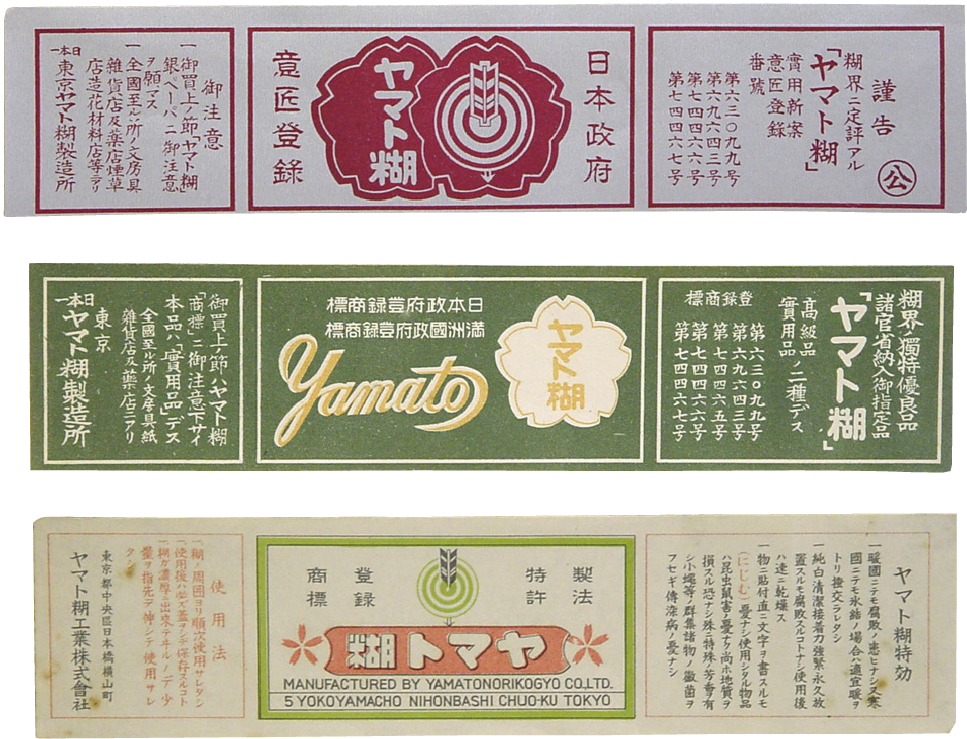
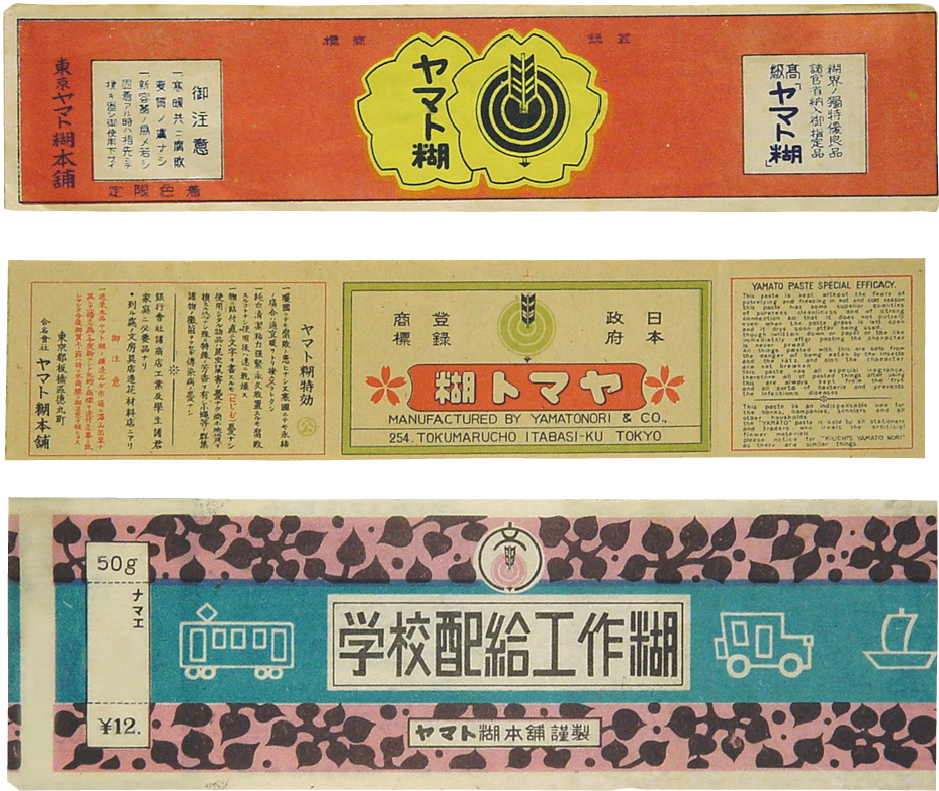

Yakichi Kiuchi Company was acquired by Hasejin Company, a kimono merchant, through M&A. Yamato Nori Company took over the goodwill of “Yamato Nori glue paste” and a new history of Yamato Nori Company began. Yamato Nori glue paste, with its “non-stiffening,” “fragrant,” and “well-spreadable” characteristics, gradually gained a good reputation and expanded its market share.
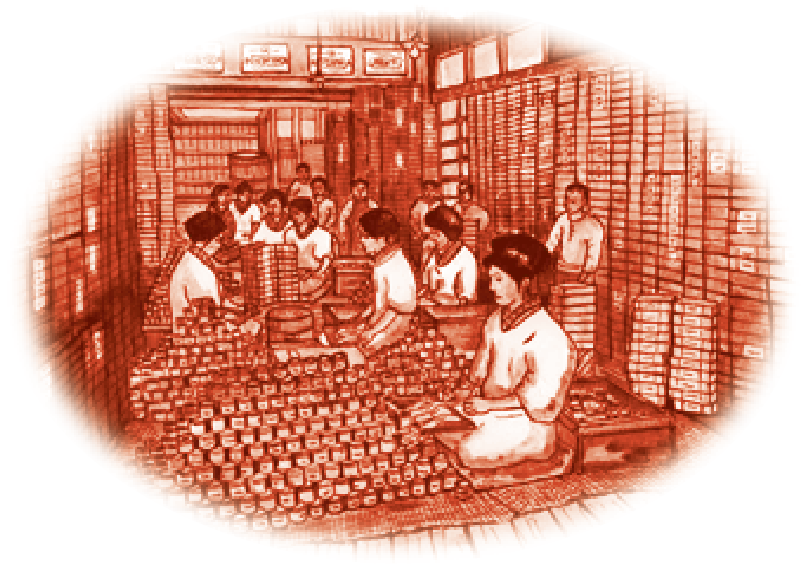
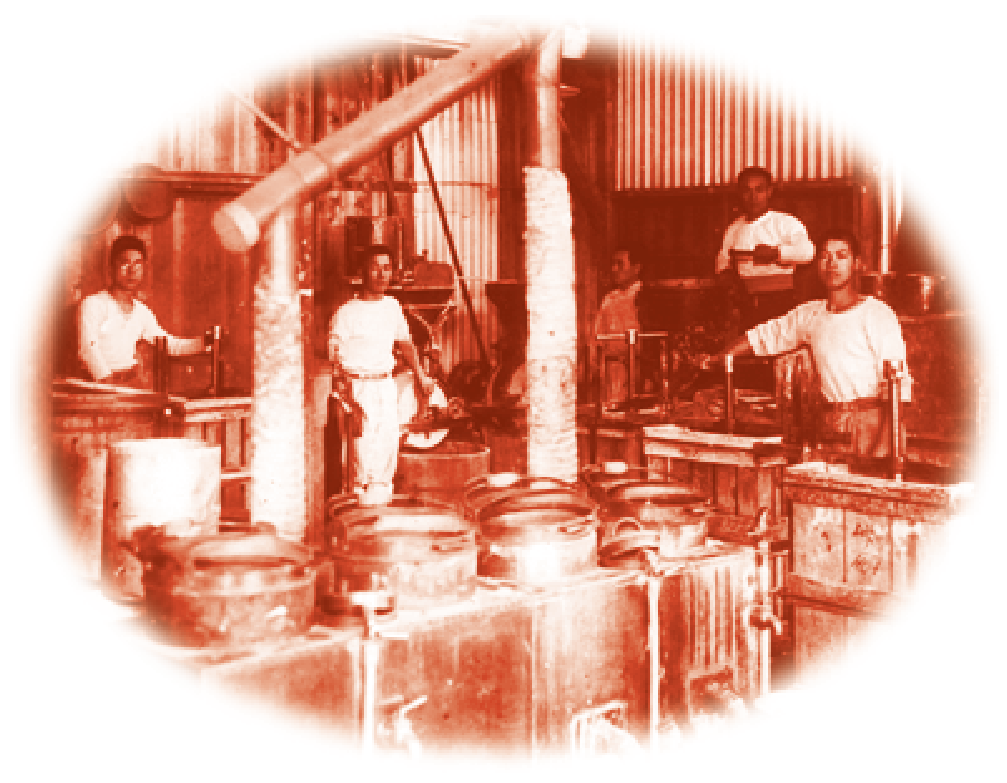

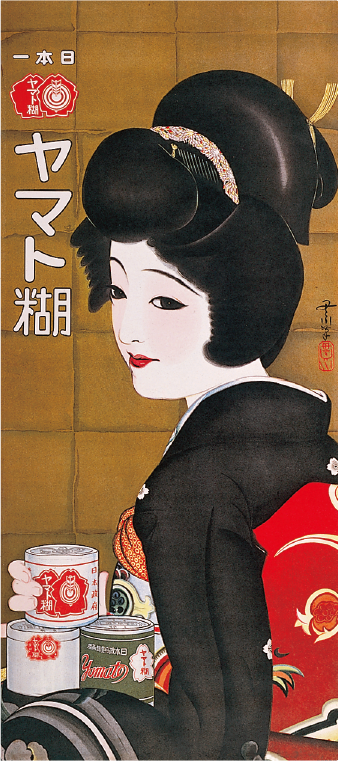
Popular actress Sumiko Kurishima was used as the model for the posters in 1923:. At this time, “Yamato Paste” is registered as a trademark and sales channels are expanded.。
In addition, the company donated drop curtains used in plays and theaters at the time, as well as podium hangers used by famous performers, with the Yamato Trade Mark on them, which were used for their performances on a nationwide tour to promote the company.
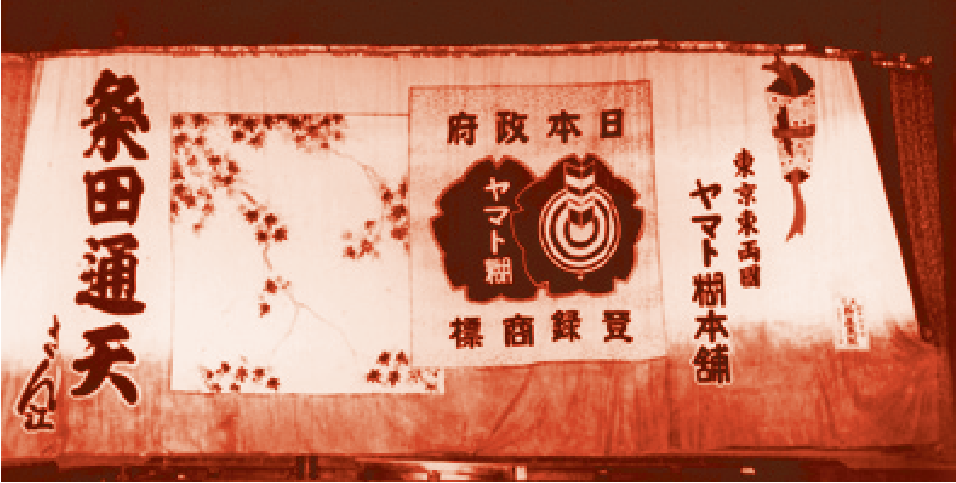
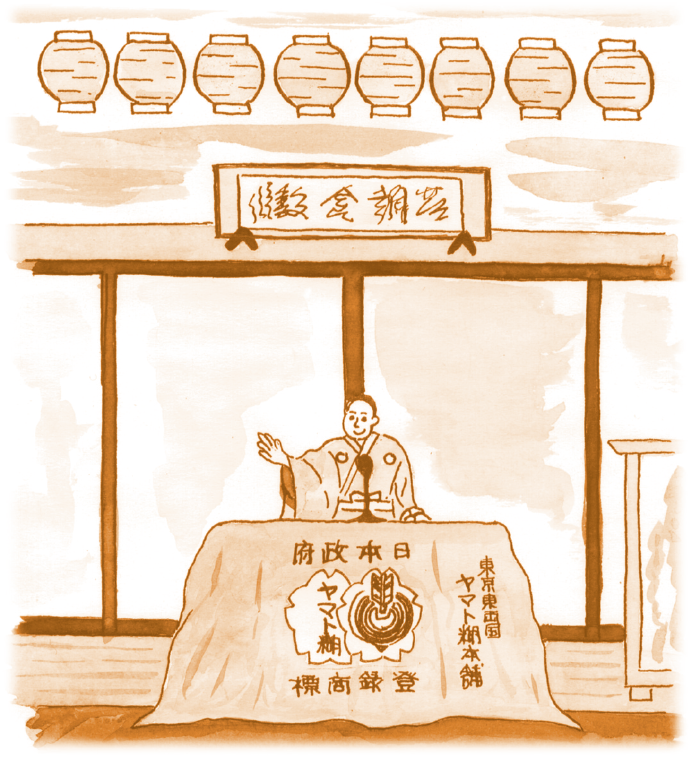

Amidst the social situation of the imminent war, the Rice Ration Control Order was promulgated in 1939. Rice, potatoes, sweet potatoes, corn, and other starch used as food were all controlled and could no longer be used as a raw material for glue.
The company had no choice but to extract starch from bulbs such as red spider lily and dahlia and use it as a raw material for the glue. The process is a complete change of concept from the conventional heating (boiling) method, and mixes different types of non-food starch through a chemical process without heating.
The “cold glue method,” a new process for producing starch paste process was perfected. The glue was stronger and less deteriorated in this process. This process was later patented in 1950.
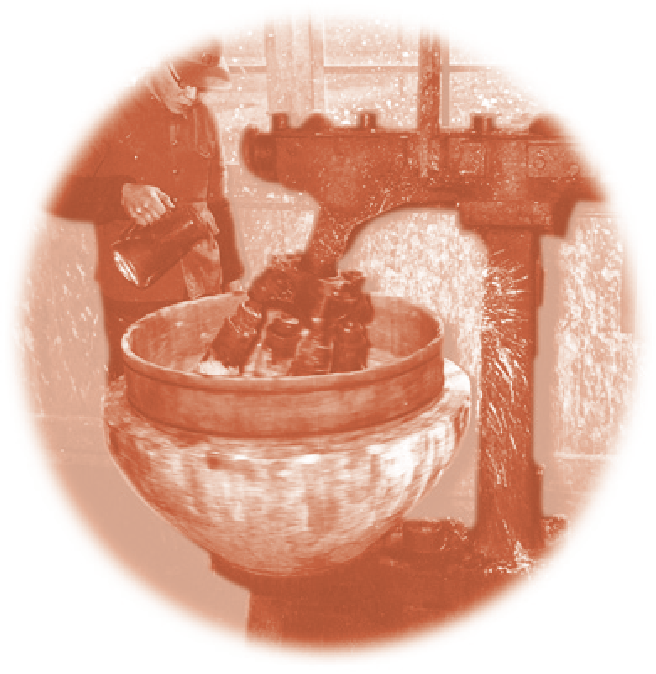
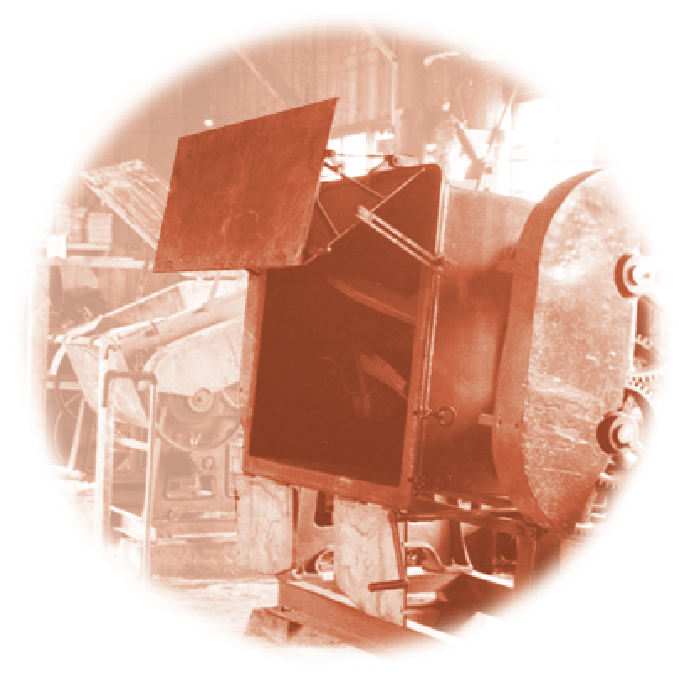

M&A of Toyo Shokuhin Kogyo Co. Ltd. in 1942 and began producing dried rice with various ingredients, dried boiled rice, and other products for delivery to the Navy. This is how the company had survived in bare livelihood in the difficult war period.
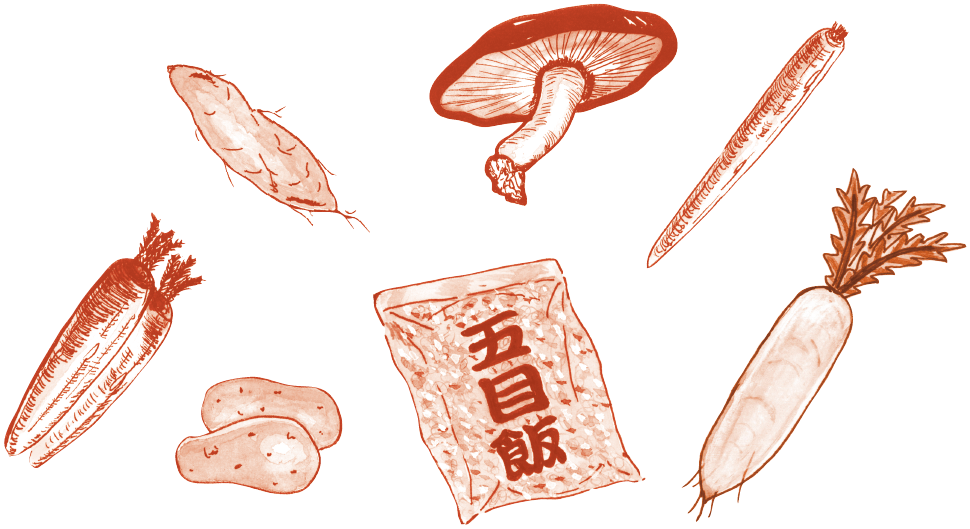

The product came in a plastic tube for easy portability in 1952, and a bottle-type plastic container was created in 1958. Containers made of plastic, a new material at the time, were three times the cost of glass containers.
However, the company quickly dispelled the “heavy” and “breakable” image of Yamato glue, and became a pioneer in the use of plastic containers.


Yamato’s basic policy is to “find something new and valuable by putting things together.”
Glue, adhesives, adhesive tapes, correction tapes, reflective tapes, and various adhesive bonded products. …… The product line was selected based on its basic philosophy.
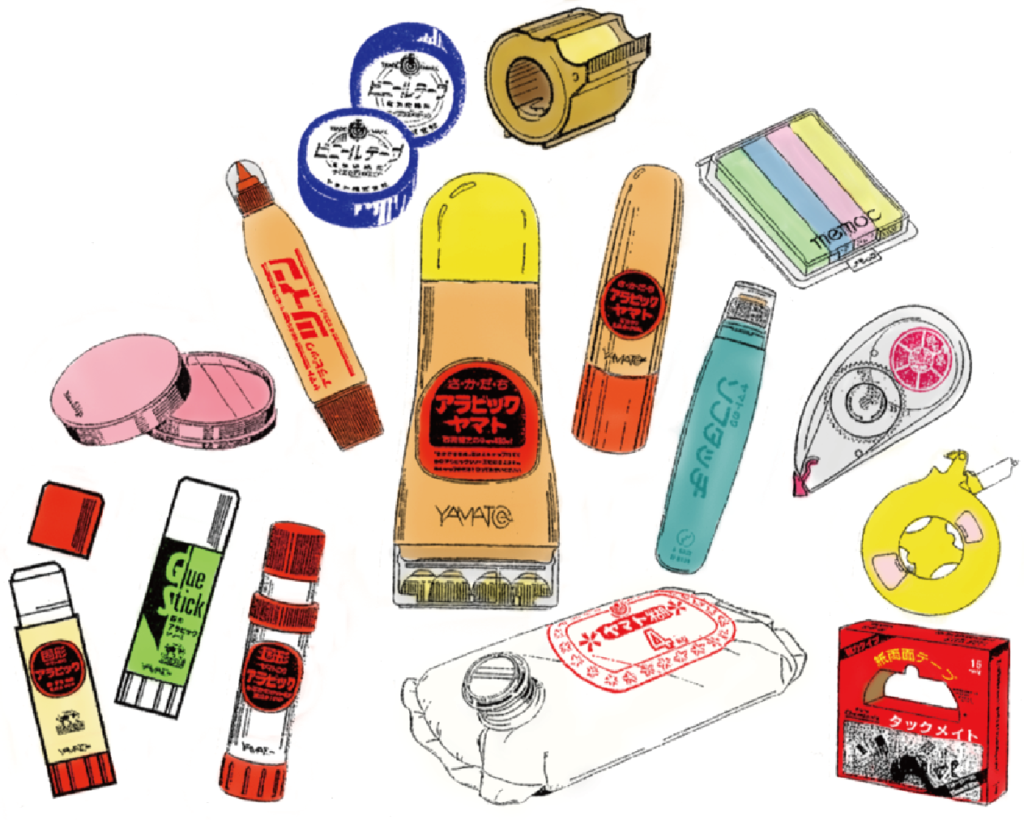

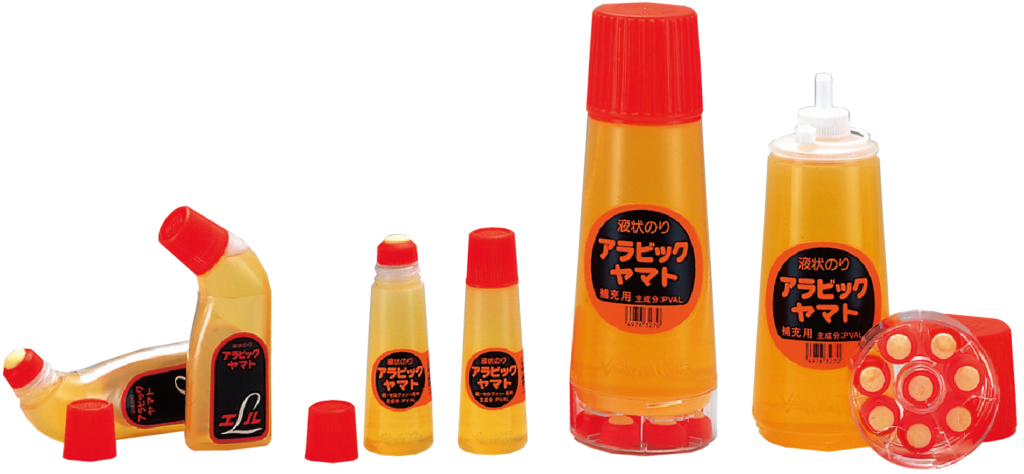

Providing the unlimited possibilities of “adhesion” in a reliable form, to the field of processing that requires high precision, and also to the field of electronics as a leading low-cost, lenergy conservation solution.
The company continues to expand and advance its technological field in various fields such as nuclear power, automotive-related, paper manufacturing, and IT.
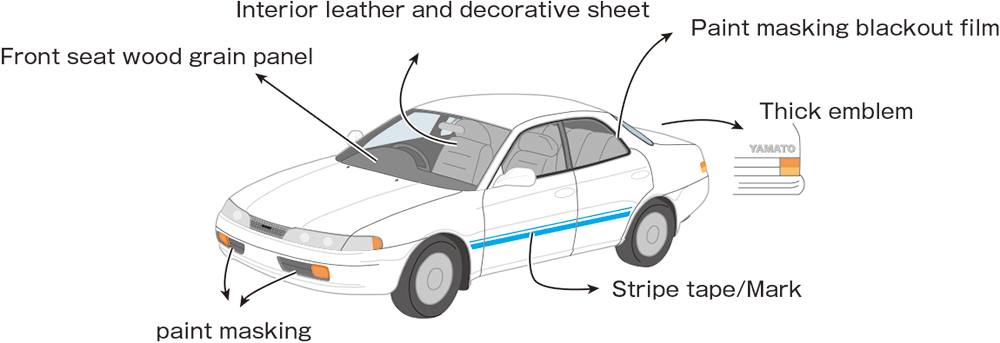

September 1986 (1986) Y.I.C. is established in Flat Rock, Michigan, U.S.A., and a plant is built to manufacture and process interior parts and body and bumper paint masking for the automotive industry, including Toyota, Ford, Mazda, and Honda. Currently, production is being carried out at the new plant in Woodhaven, TN.
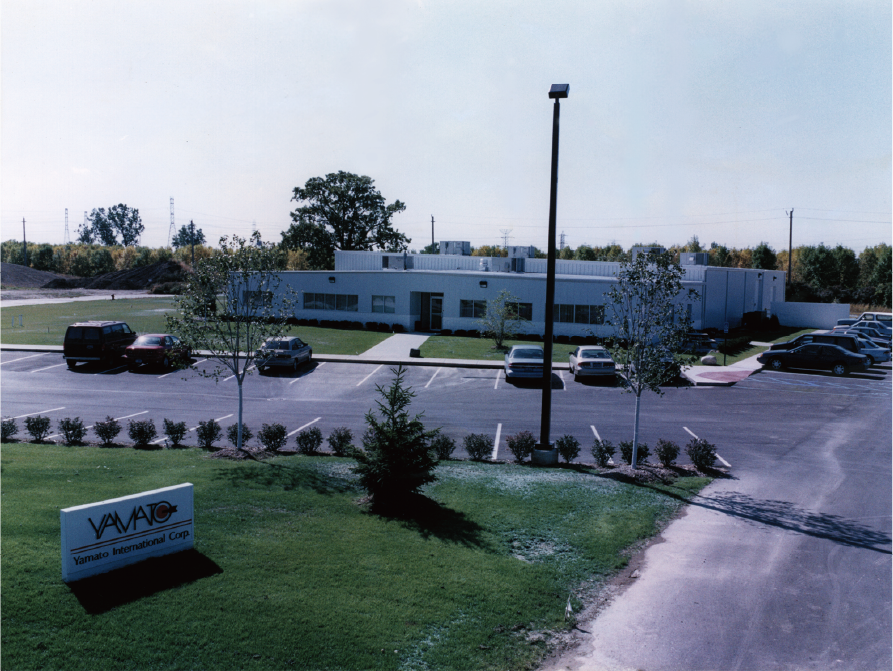
※Y.I.C.=Yamato International Co.,LTD.

In 1990 Y.I.T.C. was established in Thailand for the production of Arabic Yamato Liquid Glue to meet the needs of the global borderless society. Y.I.T.C. receives an award from the Thai government for its contribution to domestic industry and local communities. The quality of Arabic Yamato Liquid Glue is maintained at this factory.
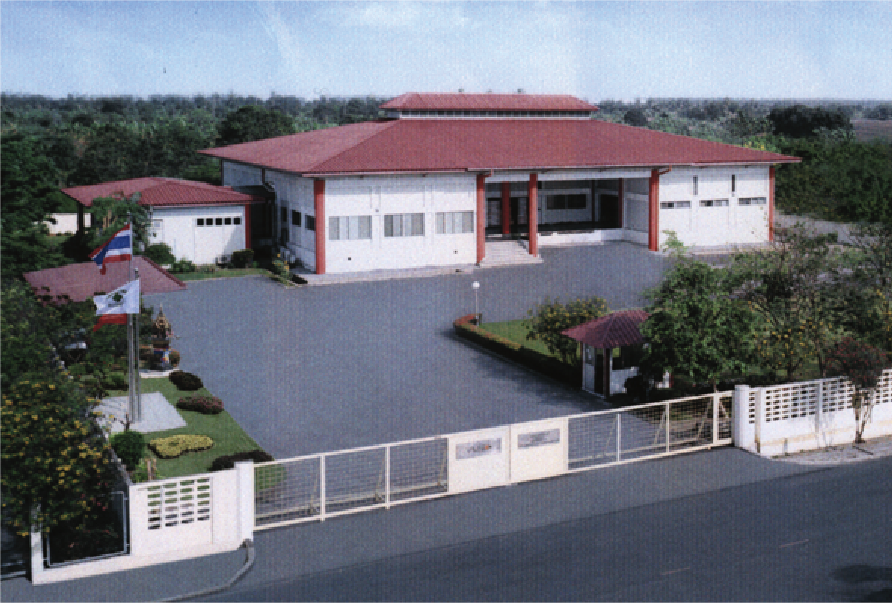
※Y.I.T.C.=Yamato International Thailand Co.,LTD.

Y.I.S., based in Singapore established in1995, and Y.I.D.T., based in Thailand were established in 1996 to meet the needs of customers who are expanding their production divisions in Southeast Asia, selling industrial tapes, adhesive processed products, and other related products, and spreading Yamato technology throughout the world. Yamato’s technology is spreading throughout the world.
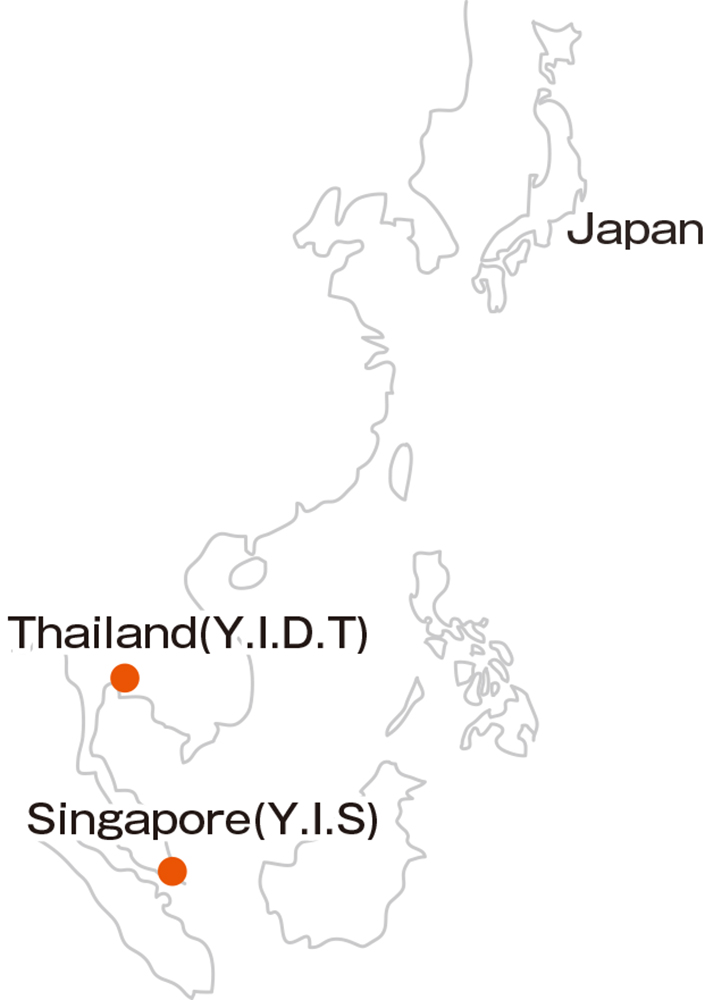
※Y.I.S.=Yamato International Singapore Pte LTD.
※Y.I.D.T.=Yamato Industry Thailand Co.,LTD.

As part of our efforts toward an environmentally friendly society, we will provide environmentally friendly products by making it a priority to develop products with specifications, materials, etc. that are less burdensome to the environment.
Joined the “Green Purchasing Network (GPN)” In 1998, and has been working to protect the global environment.

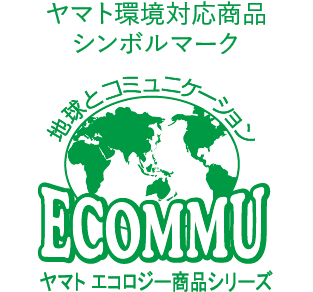

In 1999 Abolished regional sales offices and developed a front office (F.O.) using a communications and information system. The system is designed to improve the efficiency of logistics, commercial distribution, and sales by providing real-time information, prompt processing of business, speedy logistics, and a system that responds to the changing times, leading to improved customer service as well as revitalization within the company.


Y.I.C. obtained ISO9002 certification in May 1999. Quality that meets customer expectations is internationally recognized.
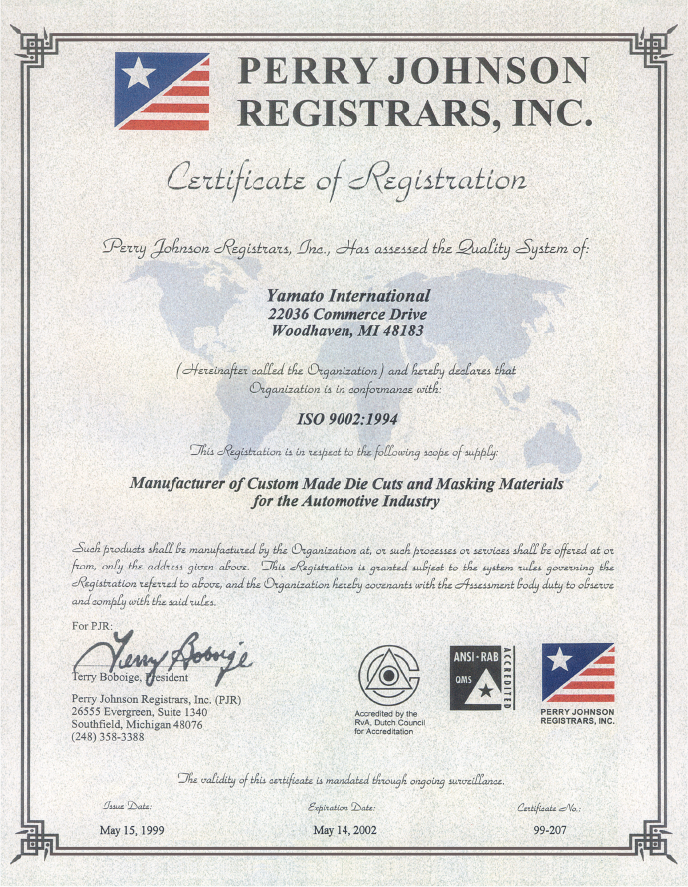

Received the award for contributions in the stationary industry from the All-Japan Stationary and Office Goods Alliance in 1999.
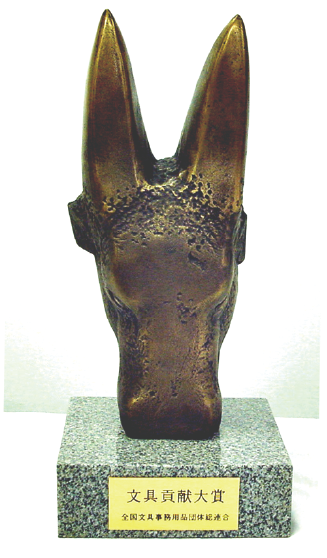
Y.I.C. was certified as an Excellent Supplier by Mazda Motor Corporation USA in 1990 and by Toyota Motor Corporation CAN in 1999, In 1999, Y.I.C. was certified as an Excellent Supplier by Toyota Motor Corporation CAN.
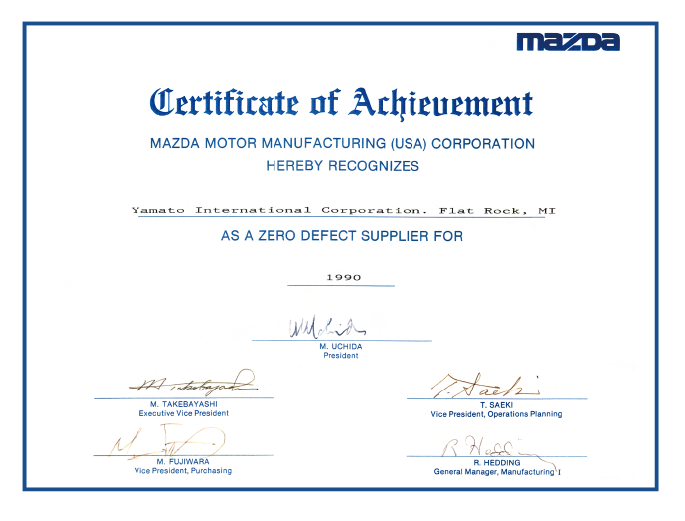
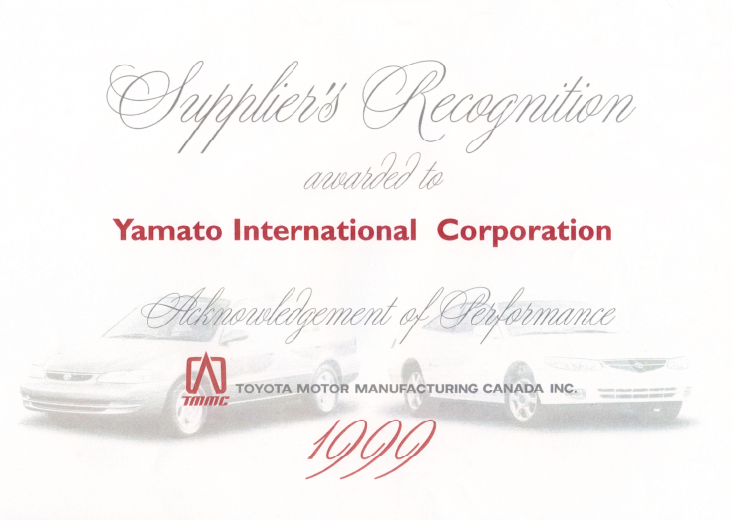
Y.I.T.C. was awarded “Best factory Award” by Industrial Estate Authority of Thailand (IEAT) in 1991.
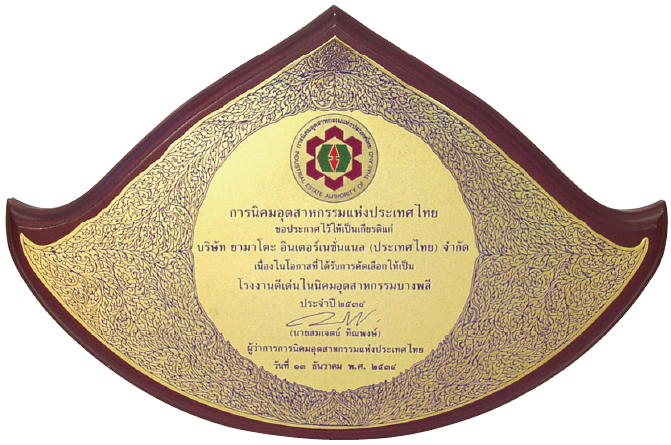
Y.I.S. was awarded “Delivery Award” by SONY INDIA LTD in March 2000.
